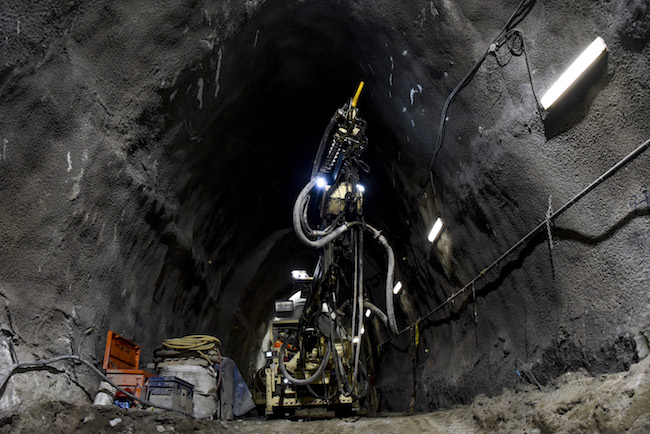
From the editor… Megaprojects test industry’s capacity to deliver
By David Kennedy
Infrastructure Labour
Tunnel construction in fall 2019 on the Eglinton Crosstown LRT. The Ontario transit agency has an aggressive list of projects to complete over the next decade. PHOTO: Metrolinx
Few and far between just a few years ago, multibillion-dollar infrastructure projects have become the norm in Ontario. With planning now underway for four new or extended transit lines in the Toronto area, Canada’s most populous province will be measuring large-scale building projects in the billions as opposed millions from here on out.
Work on the all-new Ontario Line, the Yonge North subway extension, the Eglinton Crosstown West extension and the three-stop Scarborough subway extension is expected to take more than a decade and cost an estimated $28.5 billion. The series of big transit jobs offer Canadian contractors and subcontractors significant opportunity, but will severely test their ability to deliver in what’s already a hot market.
The heads of provincial agencies Infrastructure Ontario (IO) and Metrolinx acknowledged the capacity issue last month at the annual conference of the Canadian Council for Public-Private Partnerships in Toronto. Ehren Cory, IO’s president and CEO, said staging will help the industry prepare the proper resources at the right time, but is unlikely to provide a complete solution.
“When we look down the pipe, where it becomes more problematic is where you layer on not just our program, which is big in and of itself,” Cory said. “There are some significant health care-related projects also coming in the same time frame. Then there’s nuclear refurbishments going on in our market. And then there’s the private sector activity, which you only have to look around Toronto to see.”
The early 2020s will be particularly troublesome when it comes to capacity issues, Cory said, citing a recent study.
Currently, all four of the lines are scheduled to be delivered between 2027 and 2031. As the industry is well aware, the timelines coincide with a worsening labour crisis in the skilled trades and wider construction sector. With Toronto and its suburbs continuing to swell, however, the two government agencies are pushing ahead with transit expansion in spite of the hurdles.
“We are ploughing $4 billion worth of infrastructure into the region every year,” Phil Verster, president and CEO of Metrolinx, said “I need to push that up to six or eight billion in the years to come.”
Contractors planning to take part in the rush to expand transit, as well as those nurturing a backlog of other work in the Toronto area, will need to step up their efforts to retain their current workforces and attract new staff. This includes recruiting workers currently calling other provinces home.
A growing consensus around how public infrastructure is built is also likely to influence how this handful of upcoming Toronto megaprojects, along with others across the country, will be delivered. Increasingly, stakeholders at all levels of construction are working to approach projects more collaboratively and adjust how the burden of risk can be more fairly shared. If all goes well, these changes are expected to boost job site efficiency, ultimately allowing the industry to take on more work with fewer resources.
Though tens of billions in new infrastructure work should let Canadian contractors add substantially to their backlogs, the influx of transit spending isn’t without its challenges. As you can read in our 2020 Forecast, embracing change, both on and off the job site, is almost certainly the best way forward for everyone with a stake in getting projects delivered.
This column originally appeared in the December 2019 issue of On-Site. Click here to read through the whole issue.




